Human activities have placed a great deal of stress on the planet. The overconsumption of resources has led to global warming, resource scarcity, environmental degradation, and even conflict. Central to alleviating these human stresses on the planet is an efficient and sustainable use of the resources that many people take for granted. Innovations aimed at solving this complex problem, of living in harmony with the planet, can take great inspiration from the natural world. Life on earth has been around for 3.8 billion years, plenty of time for evolution to mold life into the most well-adapted version possible. Thus, the solution of many issues of sustainability humans are currently facing have already been solved by nature and we just need to look at their well-adapted structures, processes, and functions for the secret to survival. This idea of bringing nature and biology to the design table in order to enable innovators to emulate nature’s time-tested patterns and strategies to solve mankind’s problems is called biomimicry.

Janine Benyus, a biologist, author, and innovation consultant, popularized the term biomimicry in her 1997 book Biomimicry: Innovation Inspired by Nature. In the book she details and emerging discipline that emulates nature’s designs to create a more sustainable planet and solve some of man’s toughest problems. She argues that there are three main ways in which we can mimic nature: by mimicking form or shape, mimicking processes, and mimicking whole ecosystems.
The examples of biomimicry are truly creative and inspiring.
Mimicking form and structure
Who would have guessed that the answer to creating the most efficient wind turbines would come from the flippers of a humpback whale?
The humpback whale is the only baleen that relies on maneuverability to capture prey and observations of their swimming performance establish them to be highly aquabatic and dexterous. Despite being 40-50 feet long and weighing nearly 80,000 pounds, humpback whales swim in circles tight enough to produce nets of bubbles only five feet across, that act to corral their prey.1 This extreme maneuverability is due primarily to its non-conventional flippers, which have large and irregular bumps called tubercles along the leading edge of the flipper. Tubercles are nature’s design to prevent the break up water and the creation of turbulent vortices as it flows over the flipper. Sheets of water passing between the humpback’s tubercles maintain even channels of fast moving water, thus leading to significant improvements in fluid dynamics. The form, or structure, of leading edge flippers suggest they act as enhanced lift devices while also decreasing drag and delaying stall.2 Leading edge tubercles have demonstrated an impressive 32% reduction in drag and an 8% improvement in lift.3 This passive altering of fluid or air flow from tubercle structures can be applied to wings, propellers, fans, and the blades of wind turbines.4 Leading edge tubercles have a noticeable contribution to improving aerodynamics in planes as well as turbine blades. For planes, the addition of tubercles on wings can increase aerodynamics and increase energy and fuel efficiency. Tubercles on the blades of wind turbines has also proven to increase the generation of electrical energy, even at moderate wind speeds, as compared to unmodified blades, with added benefits of efficiency and cost-effectiveness.5 This improvement in the production of renewable energy that can be achieved by mimicking the structure of humpback whale’s flippers will have measurable effects on the reduction of mankind’s destructive use of fossil fuels and the associated environmental externalities associated with the consumption of this harmful resource.
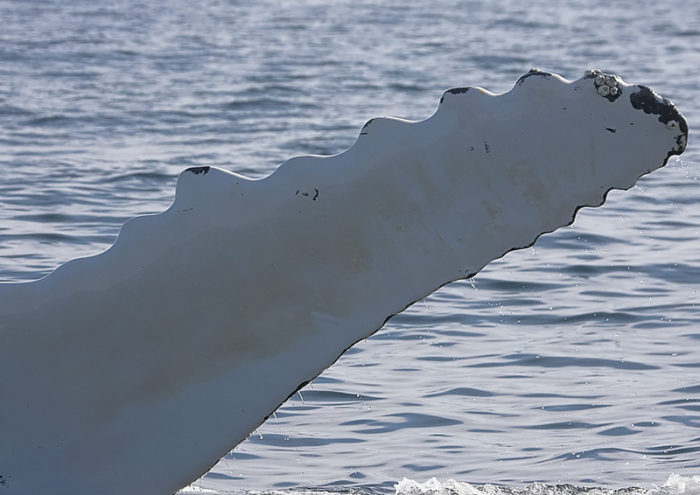
Another striking example of mimicking nature’s structure, in a way that also reduces the stress on our plant’s precious resources, is seen in the self-cleaning ability of lotus leaves. This is known as the lotus effect, and is attributable to microscopic-topography of the leaves that is characterized by bumps that trap air in interstitial spaces of the roughened surface in a way that results in a reduced liquid-to-solid contact area.6 The bumpy surface of lotus leaves allows water to bead up and collect dirt particles as it rolls off the leaf due to gravity, thus passively cleaning the leaf without expending energy. This lotus effect is physical and can be recreated or mimicked on the surface of any product and can even be applied to paints that when dried reproduce this microscopically bumpy surface. This innovative paint can be put on cars, buildings, and countless other surfaces so that rainwater can passively clean them without a need to strain water reserves for purposes of cleaning. Thus, biomimicry can be used in a way that reduces the wasteful use of water, a precious and increasingly limited resource.
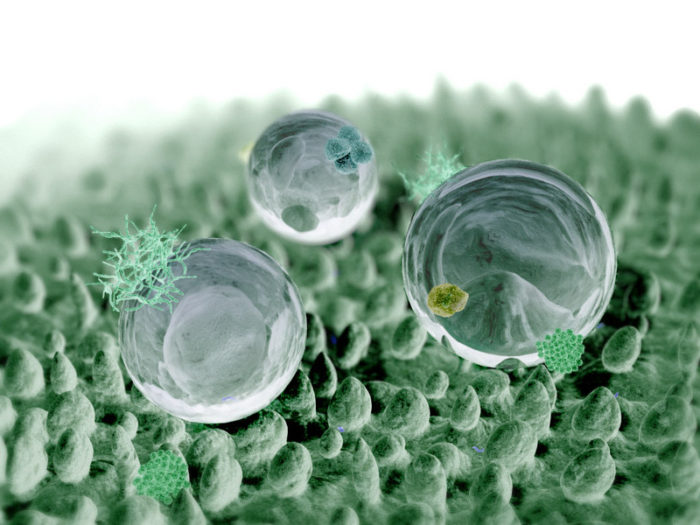
Mimicking Processes
What can bees and ants teach us about the electrical grid system?
One of the largest growing fields in the world of energy grids is the smart grid. The smart grid uses digital communications technology in order to detect and subsequently react to local changes in electricity usage. One of the most prominent consultants for this complicated and dynamic form of communication are social insects. Bees and ants are notorious for their ability to efficiently communicate as a whole and collective hive, with beehives consisting of around 50,000 members and ant colonies reaching hundreds of millions of workers. Despite the staggering number of individuals these hives and colonies manage to communicate and function as a single, cohesive, and organized unit in order to most effectively find food, flowers, and new places to live. This impressive self-organizational process can be emulated by humans in swarm technologies and applied to the electrical grid. The algorithm of communication seen in bees and ants can be mimicked in softwares that are used to have appliances in your home talk to one another and determine how to minimize peak power use, thus increasing the efficiency of the smart grid system.7 By mimicking the commutation processes of social insects we can effectively reduce our strain on resources that are essential for energy production as nature inspires the development more efficient technologies.
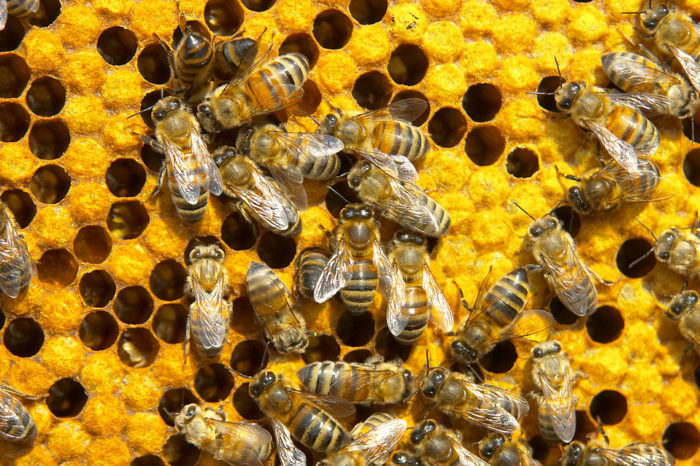
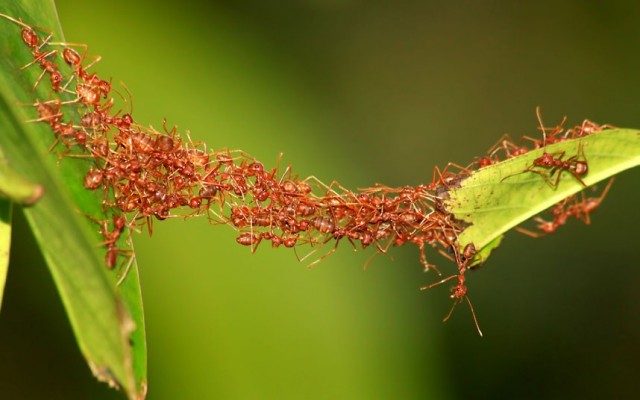
Nature has also developed a process of water filtration that is found in every cell. There is in fact many ways in which nature filters salt out of water. Man-made desalination plants require immense amounts of energy and are incredibly expensive and inefficient. Nature, however, does something much more elegant. Every red blood cell in our bodies have hourglass-shaped pores called aquaporins.8 Through the process of osmosis, these molecules allow water to pass through and leave solutes, including salts, on the other side. A company called Aquaporin is starting to make desalination membranes mimicking this technology. 9 This passive, and low energy flirtation of water, can have many potential benefits to humans, especially as water resources become more scarce and valuable.
Additionally, nature’s use of carbon dioxide can have grand implications for artificial sequestration technologies. Carbon dioxide is seen by humans as a poison, as it is the leading ingredient in climate change, but nature sees carbon dioxide as a building block. Organisms that make shells, such as coral, use carbon dioxide to build their skeletons and plants and algae absorb carbon dioxide to synthesize structural material such as cellulose.10 Taking inspiration from this natural sequestration process, that also strengthens structures, an Australian company called TecEco is making an innovative new cement called Eco-Cement. Eco-Cement contains magnesium hydroxide, and its porous structure allows carbon dioxide to permeate through and react with the magnesium hydroxide to produce magnesium carbonate (a material that adds extra strength and rigidity to the concrete).11 This reaction essentially traps carbon dioxide, much like in the process of many organisms that use it to build their structures, therefore removing it from the atmosphere. Nature has given us the secret to the effective and productive removal of carbon dioxide from the atmosphere, which can reduce some of the externalities associated with the burning of energy rich resources.
Mimicking Ecosystems
Lastly, but certainly not the least impressive, biomimicry can provide benefits to humans by mimicking entire ecosystems.
An ecosystem is a biological community comprised of harmonious interactions between organisms and their physical environment. A healthy ecosystem includes multiple species that serve similar functions or roles – for example, more than one species can fertilize the soil and more than one can control the population of a certain predator.12 This redundancy, which can be seen in prairie grasslands, is critical in ensuring long-term stability because it increases resilience in times of disturbances, such as fires, diseases, or changing climate. This resilience model seen in ecosystems is being incorporated in the field of agroforestry, that aims to increase the productivity of agriculture by moving away from a monoculture model and integrating the benefits of increased biodiversity. Thus, ecosystems have the ability to inform us how to create more sustainable production systems that in the end will increase the availability of food resources to the global population.
Ecosystems are also incredibly effective in using and reusing every molecule and nutrient as well as the energy provided to them, in the so-called “circle of life” or the cyclical patterns of the food chain. The materials of a dead log on a forest floor move up into the body of a fungus that eats it, those materials move up into a mouse, and that mouse material moves up into a hawk, and when the hawk dies decomposition starts the process all over again. The concept behind this beautiful cyclical chain within ecosystems can be seen in the ever-growing buzzword among environmentalists and economists called the circular economy. The circular economy is contrary to the traditional linear economy and stresses keeping resources in use for as long as possible, extracting the maximum value from them while in use, and then recovering and regenerating products and materials at the end of each service life.13 In this way ecosystem mimicry can teach us how to make better use of products and resources in a manner that enhances sustainability by minimizing waste and byproducts.
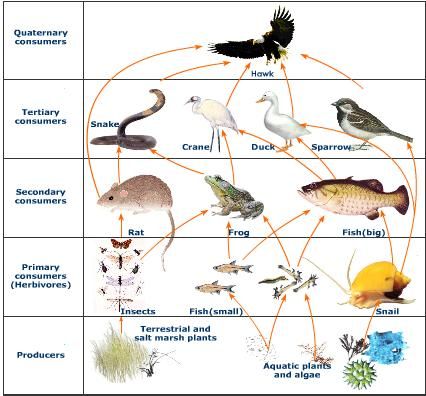
Honorable Mentions
- Bullet train: The shape of the Kingfisher's beak, which allows it to dive into water to catch prey while barely making a splash, inspired the shape of the bullet train.The feathers of owls inspired the shape, of the pantograph (which connects the train to the electrical wires above), reducing noise by mimicking the curvature and serrations of the feathers that allows them to silently swoop down and catch prey. The Adelie Penguin, whose smooth body allows it to swim and slide effortlessly, inspired the pantograph’s supporting shaft, redesigned for lower wind resistance. These nature inspired designs meant the train was faster, used less electricity, and quieter.
- Repelling bacteria by mimicking the denticle structure of the skin on Galapagos sharks
- Creating electricity by observing the chemical generation of electricity of the Amazon electric eel
- Using the capillary action displayed in all trees to promote the passive transportation of water
- Mimicking photovoltaic cells, for solar energy, after the light harvesting pigments of the Asian Hornet or the surface structure of leaves.
- Designing internal climate control systems of houses and buildings after the natural ventilation systems of termite mounds
- Mimicking the bite of a mosquito to design a painless needle for medical purposes.
By: Marc Ramzy
1
"Flippers Provide Lift, Reduce Drag : Humpback Whale." AskNature. September 14, 2016. https://asknature.org/strategy/flippers-provide-lift-reduce-drag/#.XBVBiLbMxR1.
2
Fish, F. E. and Battle, J. M. (1995), Hydrodynamic design of the humpback whale flipper. J. Morphol., 225: 51-60. doi:10.1002/jmor.1052250105
3
"Flippers Provide Lift, Reduce Drag : Humpback Whale." AskNature. September 14, 2016. https://asknature.org/strategy/flippers-provide-lift-reduce-drag/#.XBVBiLbMxR1.
4
Fish, F., Weber, P., Murray, M., & Howle, L. (2011). The Tubercles on Humpback Whales’ Flippers: Application of Bio-Inspired Technology. Integrative and Comparative Biology, 51(1), 203–213. https://doi.org/10.1093/icb/icr016
5
IBID
6
"Surface Allows Self-cleaning : Sacred Lotus." AskNature. September 14, 2016. https://asknature.org/strategy/surface-allows-self-cleaning/#.XBTt_4wo_mo.
7
Benyus, Janine. "Biomimicry in Action." TED. 2009. https://www.ted.com/talks/janine_benyus_biomimicry_in_action/transcript?language=en#t-257319.
8
IBID
9
IBID
10
"Carbon Sequestering TecEco Eco-Cements." AskNature. October 1, 2016. https://asknature.org/idea/carbon-sequestering-tececo-eco-cements/#.XBUH2owo_mo.
11
IBID
12
"Plant Species Diversity Creates Long-term Stability:. “ AskNature. November 6, 2017.
https://asknature.org/strategy/plant-species-diversity-creates-long-term-stability/#.VB52xC5dUa0.
13
"WRAP and the Circular Economy." Sustainable Clothing Action Plan (SCAP) | WRAP UK. January 24, 2013. http://www.wrap.org.uk/about-us/about/wrap-and-circular-economy.